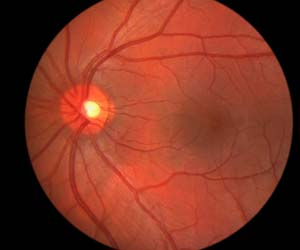Young-onset type 2 diabetes in men must be detected early enough and treated adequately to reduce the likelihood of damage to the blood vessels of the eyes, which can lead to blindness.
- Type 2 diabetes (T2D) occurring at a younger age is becoming more common globally
- In men, early-onset T2D increases blood sugar more rapidly with time
- Resulting in more damage to the blood vessels of the retinal tissue present in the eyes
- This complication can be reduced by early detection and timely treatment of T2D
Read More..
Diabetic Retinopathy
Diabetic retinopathy is a complication of diabetes caused by high blood sugar levels damaging the blood vessels in the retina (the light-sensitive layer of tissue in the back of your eye). If left undiagnosed and untreated it can cause blindness. It is the most common diabetic eye disease and a leading cause of blindness in the United States that affects 7.69 million people annually.The early stages of diabetic retinopathy usually don’t have any symptoms. In later stages of the disease, people will notice changes in their vision like blurred vision, difficulty seeing colors, eye floaters, a dark or empty spot in the center of the vision, and a sudden loss of vision.
New Link Between Early-Onset Type 2 Diabetes and Retinopathy
T2D is the most common form of diabetes that usually occurs in middle-aged and older people. It can also occur at a younger age now due to widespread poor lifestyle habits.According to the Centers for Disease Control and Prevention’s (CDC’s) 2017 National Diabetes Statistics, there were around 1.5 million diabetes cases among young adults in 2015.
A 2012 study published in the ADA Journal Diabetes Care found that the number of people under the age of 40 with type 2 diabetes could increase by up to 49 percent by 2050.
In this scenario, researchers at the University of Oslo, Norway, analyzed data from the general practitioner records of 10,242 people with T2D to find out the prevalence of young-onset diabetes and its complications.
They found that 980 (10.2%) people had young-onset diabetes (diagnosis under the age of 40) and their average age of diagnosis was 33.3 years old. Among this group, 55.6% were male and 15.5% had retinopathy.
Later they compared the retinopathy risk in this group with a group of 6,627 people who were diagnosed with T2D at 50 years and above (normal onset T2D).
Those diagnosed before the age of 40 had a higher HbA1c (average blood sugar level) at diagnosis than those diagnosed after 50 (7.6% versus 6.9%). The risk of retinopathy also increased sharply in those with young-onset T2D.
Considering other relevant factors such as diabetes duration, HbA1c, current age, and BMI men with young-onset diabetes were 72% more likely to have retinopathy than those with normal-onset T2D.
Why More Men?
This surprising finding showed that retinopathy developed sooner after diagnosis in men, but not women with young-onset T2D than in normal-onset T2D.The diagnosis is more likely to be delayed in males because they tend to visit their general practitioner less often than females. This means that their T2D was uncontrolled for a longer time, raising their risk of complications.
The new study findings are published in the journal Diabetologia.
Why More Risk in Early-Onset Type 2 Diabetes?
T2D occurs when beta cells in the pancreas cannot make enough insulin (a hormone that helps turn the sugar in food into energy) or when the insulin doesn’t work properly (a phenomenon known as “insulin resistance”).Whereas, early-onset T2D is considered to be a more aggressive form because of the higher average blood sugar levels found. This can be a sign of more rapid deterioration of the insulin-producing cells and therefore more risks associated with diabetes are seen in early-onset type 2 diabetes.
Based on these findings, the current guidelines on diabetes prevention and treatment should be updated to reflect the higher risk of complications in those with young-onset diabetes, particularly in men.
How to Prevent Diabetic Retinopathy?
Managing diabetes is the best way to lower the risk of diabetic retinopathy. That means keeping the blood sugar levels in a healthy range.This can be achieved by getting regular physical activity, eating healthy, and carefully following doctors’ instructions.
To make sure your diabetes treatment plan is working, you’ll need a special lab test called an HbA1C test that shows the average blood sugar level over the past 3 months. Meeting the optimal HbA1C goal can prevent diabetic retinopathy.
It is also important for diabetic patients to do regular eye exams to check for diabetic retinopathy. The examination is simple and painless where doctors will provide eye drops to dilate (widen) the pupil.
If diabetic retinopathy is developed, early treatment can stop the damage and prevent blindness.
Having high blood pressure or high cholesterol along with diabetes increases the risk for diabetic retinopathy. So, controlling blood pressure and cholesterol is also important to help lower diabetic retinopathy risk.
References:
- Diabetic Retinopathy - (https://www.nei.nih.gov/learn-about-eye-health/eye-conditions-and-diseases/diabetic-retinopathy)
- Diabetic Retinopathy: Causes, Symptoms, Treatment - (https://www.aao.org/eye-health/diseases/what-is-diabetic-retinopathy)
- Diabetic retinopathy - (https://www.nhs.uk/conditions/diabetic-retinopathy/)
Source-Medindia
















